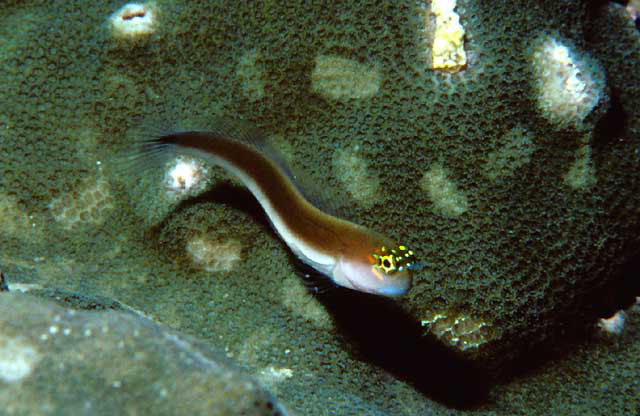| Blenniidae (Combtooth blennies), subfamily: Salariinae |
| 11 cm TL (male/unsexed) |
|
demersal; marine |
| Western Indian Ocean: known only from the Persian Gulf, Gulf of Oman, coast of Oman, and northwestern coast of the Indian subcontinent as far south as the Gulf of Kutch. |
|
Dorsal spines (total): 12-14; Dorsal soft rays (total): 18-20; Anal spines: 2-2; Anal soft rays: 19-23; Vertebrae: 37-39 |
| Almost exclusively benthic. Oviparous. Eggs are demersal and adhesive (Ref. 205), and are attached to the substrate via a filamentous, adhesive pad or pedestal (Ref. 94114). Larvae are planktonic, often found in shallow, coastal waters (Ref. 94114). |
|
Least Concern (LC); Date assessed: 25 March 2009 Ref. (130435)
|
| harmless |
|
Source and more info: www.fishbase.org. For personal, classroom, and other internal use only. Not for publication.

